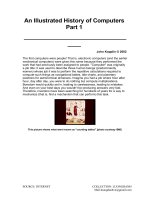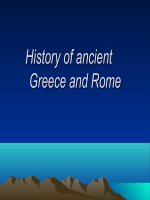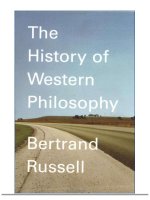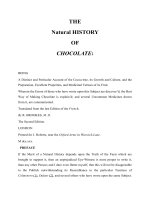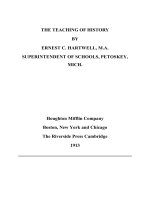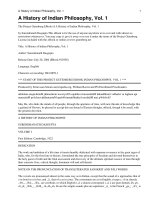thanksgiving history
Bạn đang xem bản rút gọn của tài liệu. Xem và tải ngay bản đầy đủ của tài liệu tại đây (73.51 KB, 2 trang )
The History of Thanksgiving
Thanksgiving is one of the most popular holidays in the United States of America.
Traditionally, Thanksgiving is a holiday that Americans spend together with their families
who enjoy a Thanksgiving meal which usually includes the traditional Thanksgiving turkey.
Here is the story of Thanksgiving. Difficult words are explained at the end of each paragraph.
Once you have read the story of Thanksgiving, continue to page two for a reading
comprehension quiz to test your understanding of the text.
Thanksgiving
The Pilgrims, who celebrated the first thanksgiving in America, were fleeing religious
persecution in their native England. In 1609 a group of Pilgrims left England for the religious
freedom in Holland where they lived and prospered. After a few years their children were speaking Dutch
and had become attached to the Dutch way of life. This worried the Pilgrims. They considered the Dutch
frivolous and their ideas a threat to their children's education and morality.
fleeing = running away from, escaping prospered = do well, live wellfrivolous = not seriousmorality =
belief system
So they decided to leave Holland and travel to the New World. Their trip was financed by a group of
English investors, the Merchant Adventurers. It was agreed that the Pilgrims would be given passage and
supplies in exchange for their working for their backers for 7 years.
backers = financial supporters
On Sept. 6, 1620 the Pilgrims set sail for the New World on a ship called the Mayflower. They sailed from
Plymouth, England and aboard were 44 Pilgrims, who called themselves the "Saints", and 66 others ,whom
the Pilgrims called the "Strangers."
The long trip was cold and damp and took 65 days. Since there was the danger of fire on the wooden ship,
the food had to be eaten cold. Many passengers became sick and one person died by the time land was
sighted on November 10th.
damp = wetsighted = seen
The long trip led to many disagreements between the "Saints" and the "Strangers". After land was sighted a
meeting was held and an agreement was worked out, called the Mayflower Compact, which guaranteed
equality and unified the two groups. They joined together and named themselves the "Pilgrims."
Although they had first sighted land off Cape Cod they did not settle until they arrived at Plymouth, which
had been named by Captain John Smith in 1614. It was there that the Pilgrims decide to settle. Plymouth
offered an excellent harbor. A large brook offered a resource for fish. The Pilgrims biggest concern was
attack by the local Native American Indians. But the Patuxets were a peaceful group and did not prove to be
a threat.
harbor = protected area on the coastthreat = a danger
The first winter was devastating to the Pilgrims. The cold, snow and sleet was exceptionally heavy,
interfering with the workers as they tried to construct their settlement. March brought warmer weather and
the health of the Pilgrims improved, but many had died during the long winter. Of the 110 Pilgrims and
crew who left England, less that 50 survived the first winter.
devastating = extremely difficultinterfering = preventing, making difficult
On March 16, 1621 , what was to become an important event took place, an Indian brave walked into the
Plymouth settlement. The Pilgrims were frightened until the Indian called out "Welcome" (in English!).
settlement = place to live
His name was Samoset and he was an Abnaki Indian. He had learned English from the captains of fishing
boats that had sailed off the coast. After staying the night Samoset left the next day. He soon returned with
another Indian named Squanto who spoke better English than Samoset. Squanto told the Pilgrims of his
voyages across the ocean and his visits to England and Spain. It was in England where he had learned
English.
voyages = travels
Squanto's importance to the Pilgrims was enormous and it can be said that they would not have survived
without his help. It was Squanto who taught the Pilgrims how to tap the maple trees for sap. He taught them
which plants were poisonous and which had medicinal powers. He taught them how to plant the Indian corn
by heaping the earth into low mounds with several seeds and fish in each mound. The decaying fish
fertilized the corn. He also taught them to plant other crops with the corn.
sap = the juice of the maple treepoisonous = food or liquid dangerous to the healthmounds = raising
of the earth made of dirt by hand decaying = rotting
The harvest in October was very successful and the Pilgrims found themselves with enough food to put
away for the winter. There was corn, fruits and vegetables, fish to be packed in salt, and meat to be cured
over smoky fires.
cured = cooked by smoke in order to keep meat a long time
The Pilgrims had much to celebrate, they had built homes in the wilderness, they had raised enough crops to
keep them alive during the long coming winter, they were at peace with their Indian neighbors. They had
beaten the odds and it was time to celebrate.
wilderness = uncivilized countrycrops = cultivated vegetables such as corn, wheat, etc.beaten the odds
= won something that was very difficult or against somebody
The Pilgrim Governor William Bradford proclaimed a day of thanksgiving to be shared by all the colonists
and the neighboring Native Americans. They invited Squanto and the other Indians to join them in their
celebration. Their chief, Massasoit, and 90 braves came to the celebration which lasted for 3 days. They
played games, ran races, marched and played drums. The Indians demonstrated their skills with the bow and
arrow and the Pilgrims demonstrated their musket skills. Exactly when the festival took place is uncertain,
but it is believed the celebration took place in mid-October.
proclaimed = declared, named colonists = original inhabitants of the US coloniesbraves = Indian
warriormusket = type of gun or rifle used during that period in history
The following year the Pilgrims harvest was not as bountiful, as they were still unused to growing the corn.
During the year they had also shared their stored food with newcomers and the Pilgrims ran short of food.
bountiful = a lot of newcomers = people who have recently arrived
The 3rd year brought a spring and summer that was hot and dry with the crops dying in the fields. Governor
Bradford ordered a day of fasting and prayer, and it was soon thereafter that the rain came. To celebrate -
November 29th of that year was proclaimed a day of thanksgiving. This date is believed to be the real true
beginning of the present day Thanksgiving Day.
fasting = not eatingthereafter = after that
The custom of an annually celebrated thanksgiving, held after the harvest, continued through the years.
During the American Revolution (late 1770's) a day of national thanksgiving was suggested by the
Continental Congress.
harvest = collection of the crops
In 1817 New York State had adopted Thanksgiving Day as an annual custom. By the middle of the 19th
century many other states also celebrated a Thanksgiving Day. In 1863 President Abraham Lincoln
appointed a national day of thanksgiving. Since then each president has issued a Thanksgiving Day
proclamation, usually designating the fourth Thursday of each November as the holiday.
designating = appointing, naming

